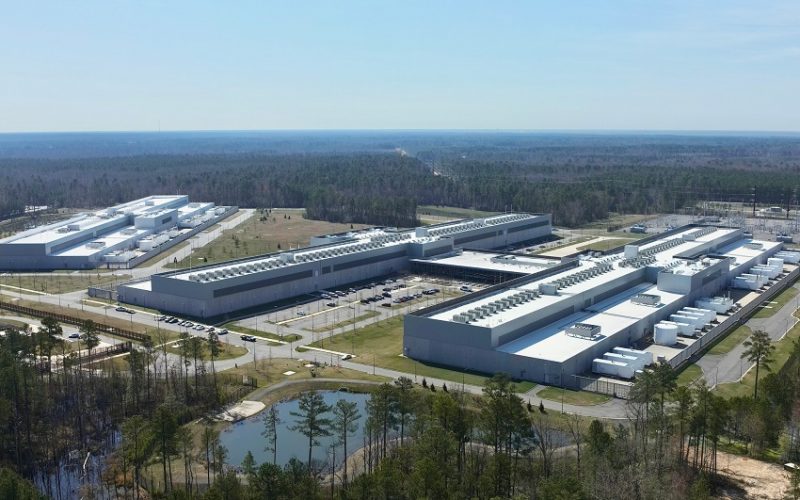Richmond, VA – Virginia has long been recognized as the data center capital of the world, hosting a vast number of facilities that power everything from websites to streaming platforms. A recent study by the Joint Legislative Audit and Review Commission (JLARC) sheds light on both the economic advantages and emerging challenges tied to this booming industry. With nearly 35% of the global hyperscale data market, Virginia’s role in the data center industry is pivotal, but it comes with significant implications for the state’s infrastructure, energy resources, and local economies.
The data center industry has proven to be a major economic driver for Virginia. According to the JLARC report, the sector supports approximately 74,000 jobs and contributes a staggering $9.1 billion to the state’s Gross Domestic Product (GDP) each year. These figures reflect the industry’s massive capital investment during construction and the relatively high-paying, though limited, number of permanent jobs data centers provide.
Construction of these facilities typically spans 12 to 18 months and requires around 1,500 workers at peak periods. Once operational, however, the number of full-time employees at a typical 250,000-square-foot data center is relatively small, with only about 50 workers, half of whom are usually contractors. Despite the modest number of permanent jobs, the high wages offered in the industry benefit local economies, and the construction phase provides a significant financial boost to Virginia-based suppliers and contractors.
In addition to job creation, local governments benefit from data centers through tax revenues. These revenues primarily come from business personal property and real estate taxes, though the impact varies by locality. For example, in more established data center markets, such as northern Virginia, these taxes can account for up to 31% of local revenue. However, some localities have attempted to attract data centers by offering tax breaks, which reduces their overall tax take.
Despite the industry’s economic benefits, the study highlights one of the most pressing concerns for Virginia: energy demand. Data centers are voracious consumers of electricity, and their rapid growth is expected to double the state’s energy demand over the next decade. To meet this surge, Virginia would need substantial investments in energy infrastructure, including the construction of solar and wind facilities, natural gas plants, and the expansion of transmission networks.
The JLARC report outlines a scenario where Virginia must drastically increase the pace of renewable energy development, adding solar capacity at twice the rate of 2024 and wind generation at levels exceeding the state’s offshore wind potential. However, such ambitious goals face considerable challenges, particularly with the reliance on unproven nuclear technologies and the uncertain pace of renewable energy development.
Moreover, the energy demands of data centers are expected to raise costs for Virginia residents. The study projects that by 2040, typical residential customers could see their monthly energy bills increase by as much as $37 due to the costs of infrastructure expansion. This increase is likely to be passed on to non-data center customers as utilities seek to recoup the costs associated with meeting the sector’s growing needs.
While northern Virginia has emerged as a dominant hub for data centers, other parts of the state are vying for a slice of the pie. Central Virginia, for example, has seen increased interest, with Henrico County already hosting more than ten data centers and additional projects underway. Powhatan County recently approved a $2.7 billion data center project, further signaling the state’s efforts to diversify its data center footprint.
However, attracting data centers to economically distressed areas remains a challenge. Localities in regions like southwestern Virginia struggle with a lack of the infrastructure that data centers require, such as reliable power sources and available land. JLARC suggests that these areas could still become attractive to data centers specializing in artificial intelligence (AI) workloads, provided they develop industrial sites that meet the sector’s needs.
Beyond localities, the study identifies several risks to Virginia’s electric utilities. The state’s utility companies face the possibility of overinvesting in energy infrastructure if data centers do not follow through on their expected energy consumption, or if existing centers close or relocate. This would leave utilities with the financial burden of excess infrastructure that may not be needed, potentially leading to higher costs for everyday customers.
Electric co-ops, which are not-for-profit utilities owned by their customers, are especially vulnerable. If a data center fails to pay its energy bill, other co-op members could be forced to absorb the costs, putting financial strain on local communities. Similarly, participation by data centers in Virginia’s retail choice program, which allows large-load customers to purchase electricity from third-party providers, could shift costs to other customers, further complicating the state’s energy landscape.
Data centers also pose environmental challenges, particularly with their reliance on diesel generators for backup power. These generators emit air pollutants, including nitrogen oxides, carbon monoxide, and particulate matter. While Virginia’s Department of Environmental Quality (DEQ) has implemented regulations to limit emissions from these generators, the growing number of data centers raises concerns about their cumulative environmental impact.
As Virginia continues to serve as the global epicenter for data centers, the state faces the dual challenge of fostering economic growth while managing the strain on its infrastructure and energy resources. The JLARC study recommends that Virginia lawmakers consider strategies to mitigate the impact of data centers, such as promoting renewable energy development and ensuring that energy costs are distributed fairly across all customers.
With the demand for data and the infrastructure to support it only set to grow, Virginia will need to strike a delicate balance between maintaining its competitive edge in the tech industry and safeguarding its energy future.











